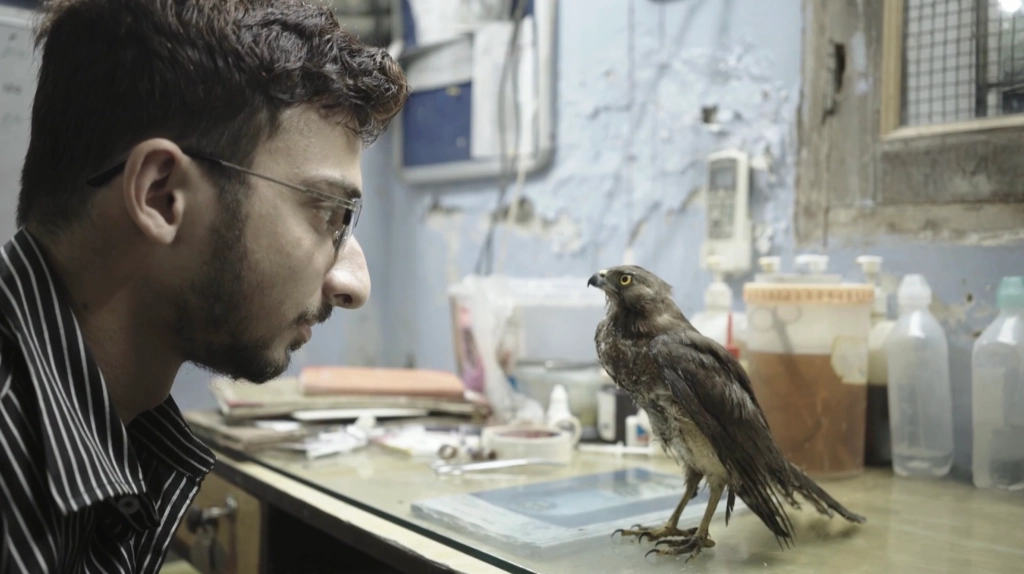
‘All That Breathes’ review: Shaunak Sen’s timely exploration of climate change

Shaunak Sen’s documentary film All That Breathes has garnered global accolades this year, winning the best documentary prize in some of the most prestigious film festivals around the world. It won the World Cinema Grand Jury Award at the Sundance Film Festival in the United States, and subsequently, the L’OEil d’Or (The Golden Eye Award) for the best documentary at the Festival de Cannes. Recently, it was also the winner of the Grierson Award for best documentary film at the BFI London Film Festival.
The film, which opens to an overburdened and toxic Delhi landfill at night-time, escalates a sense of climate catastrophe — the rising air-pollution levels, collapse of urban infrastructures and waste-management facilities — while remaining firmly embedded in the everyday life of the two brothers in India, Muhammad Saud (40) and Nadeem Shehzad (44). The Muslim brothers rescue injured raptors and share a special affinity toward the black kites (cheels), which are now dying at an unprecedented rate due to increasing air pollution and urban toxicity. The brothers, along with their young assistant Salik Rehman, dream of opening their own bird hospital in Northeast Delhi.
An inconspicuous parallel
Meanwhile, fighting against all odds, they continue to rescue and care for the injured raptors from the ramshackle basement of their apartment, alongside which they also run a soap-dispenser business. During the film screening at Curzon, Soho (UK), the audience introject with loud approval, when Salik is seen tenderly scrubbing the wings of an indolent owl lathered in foam, relaxing in a basin of bathwater.
Also read: No Bollywood actor can reprise my role Rishab Shetty on Kantara remake
In the voiceover accompanying this footage, the brothers remember how when they were younger, their mother (ammi) might have bathed them similarly. The documentary draws links between the endangered raptors, particularly the black kites, and India’s minority Muslim population. However, this analogy is so inconspicuous that it might easily be glossed over by anyone not too familiar with the present social and political climate in India.
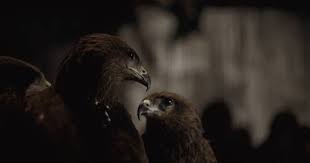
At the outset, a global audience mostly remains spellbound by the odd menagerie of birds in a basement recovering from the impact of ecological malaise in Delhi. Over a long duration, the film intensively documents the brothers attending to injured birds in their basement, while also capturing their private spaces of inhabitation located upstairs. As the family gathers for meals, in the Muslim neighbourhood of Wazirabad, we witness the cramped housing conditions, two rooms shared by Saud and Nadeem’s wives and children and their elderly convalescent father. The subjects’ lives become an oblique entry point for the social and political unrest gripping the capital.
Following the protest against the Citizenship (Amendment) Act in 2019 and the communal riots in Delhi in 2020, the highly stylized cinematography of the documentary collapses into an idiosyncratic assemblage of media technologies at different junctures. There are some news footages, low-resolution videos shot on a mobile phone of an unknown mosque being desecrated, also still-photographs of houses abandoned during the 2020 communal riots in Nadeem and Saud’s neighbourhood in Northeast Delhi, all of which is appended to the film’s lyrical narrative like a decontextualized prosthesis.
Pushing the frontiers of documentary filmmaking
At one point, we are viewing surveillance camera footage acquired from a CCTV installed in the basement, but we only catch the brothers playing cricket; one of them is cheating and the others are used to it. The audience laughs at the innocent banter between brothers, but the depoliticisation of the meaning behind such footages extracted from the real-time of surveillance cameras covertly functions to neutralise the internal threat posed by the use of media technologies for the surveillance and disciplining of the population. In this regard, last year’s winner of the Golden Eye at the Cannes Film festival, Payal Kapadia’s essay film A Night of Knowing Nothing has incorporated CCTV footage far more boldly and politically.
In the first shot, an emaciated dog is shown scavenging at a garbage dumpsite in the middle of the night. There is an effulgent lens-flare from the headlight of a passing automobile; the light leaks into the landfill with an intensity that almost blinds the audience.
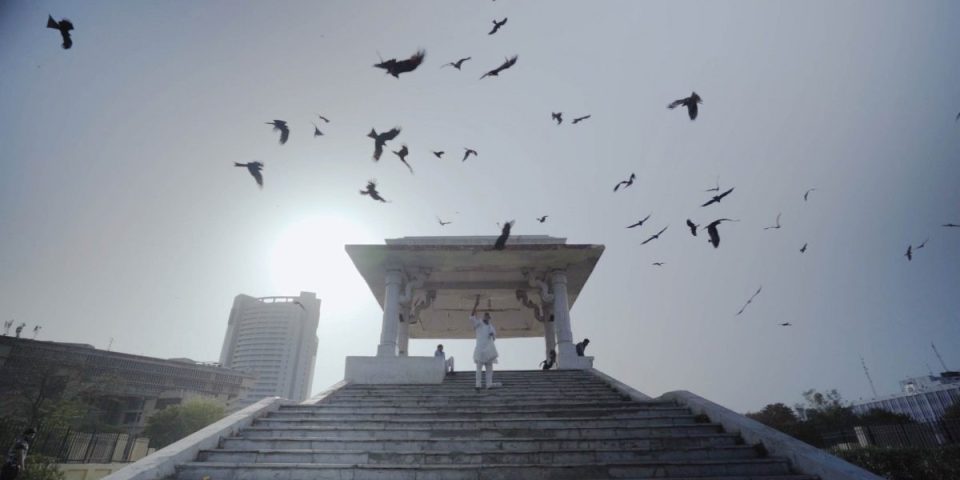
The abject dog rummaging through heaps of garbage in the bleak landfills of New Delhi has an uncanny resemblance to the portentous appearance of dogs in the socio-political dystopias of classic fiction films; for instance, the tremulous black dog at the abandoned nuclear sites in Andrei Tarkovsky’s Stalker (1979) or even the black dog barking in the dead of night in the derelict ruins of post-socialist Hungary in Béla Tarr’s Damnation (1988).
Sen is experimenting at the frontiers of documentary filmmaking by utilising the cinematic and narrative techniques of fiction films and the broad consensus and praise for this work is indeed due to the fact that it has managed to push the limit of documentary filmmaking even further.
The film exerts a taut restraint in terms of narrative economy. There is little effort to contextualize the social and political undercurrents specific to postcolonial India. However, it is the same strategy that allows the captured documentary footage of the brothers’ lives to speak for itself without imposing an ideology or an opinion.
Also read: Gandhada Gudi review: Puneeth’s film is like a trek into Karnataka’s wilderness
Conceptually, it is the economy of the narrative that aids in scaling outwards — from the singularities and specificities of a working-class family living in a dominantly Muslim neighbourhood in New Delhi to the amplified global urgencies of an impending ecological crisis. In order to highlight the real-life struggles endured by Saud and Nadeem, the film repurposes strategies of fiction filmmaking rather inventively.
However, grafting techniques of fiction filmmaking onto a documentary film that involves the lives of real people, and the contingencies of everyday life, always remain a volte-face; it remains an endeavour that is both laudable (as this film is) but also deeply problematic.
The transcendental relation with black hawks
The film is a timely exploration of climate change: the meteoric rise of sea-levels, air pollution and the rampant destruction of both human and animal habitats in the post-liberalised urban economies of developing countries. Amitav Ghosh’s The Great Derangement: Climate Change and the Unthinkable (2016) pre-empts some of the structural impossibilities of imaginatively representing climate change, which continues to remain “unthinkable” in literature and artworks.
To draw our attention to the foreclosure of narrative events depicting climate catastrophes in literary canons, Ghosh reflects on his own encounter with a freak cyclone as a young student loitering around the Delhi University campus, examining how the unassimilated residue of this perilous encounter with an ecological catastrophe continues to reappear and shape his oeuvre.
However, Sen’s directorial vision is more focused on the human-animal dyad. His work begins with an interest in exploring the hypnotic and obsessive love for birds that one finds in literary works such as J.A. Baker’s The Peregrine (1967), Helen Macdonald’s H is for Hawk (2016) and Max Porter’s highly stylised novella, Grief is the Thing with Feathers (2015). None of these literary works are explicitly about ecology, urban spaces or postcolonial India. Instead what they share in common is the focus on humans, particularly those belonging to dominant Western cultures, and their metaphysical and transcendental relation to certain kinds of birds.
In the documentary film, the inspiration for a spiritual relation to birds takes a cinematic form through the brothers’ transcendental relation with the black hawks (cheels) gliding through the city skies. The Islamic virtuosity and duty towards feeding the black kites is in consonance with the belief of a section of Muslims who think that when they fling ‘raw meat skyward’ and cheels eat them, they also eat away their worries, reducing the burden of a troubled soul.
The human-animal contrast
There is a universal appeal to the story following the journey of two brothers and their aspiration and struggles to set up a bird hospital. I noticed that during the film screening, there were also loud sighs of approval among the audience when the strange and exotic birds are seen recovering in the dark basement, most people also shake their heads with a growing sense of disbelief at the mounting landfills in the developing countries of the global South.
Despite the stylised cinematic prowess in capturing the birds and their environment, there were two poignant moments that remained with me from the film: One, a serene mazar (tomb) in Delhi where the accompanying voiceover is that of the brothers reminiscing a philosophy imparted to them by their deceased mother, that there is no distinction between things that breathe.
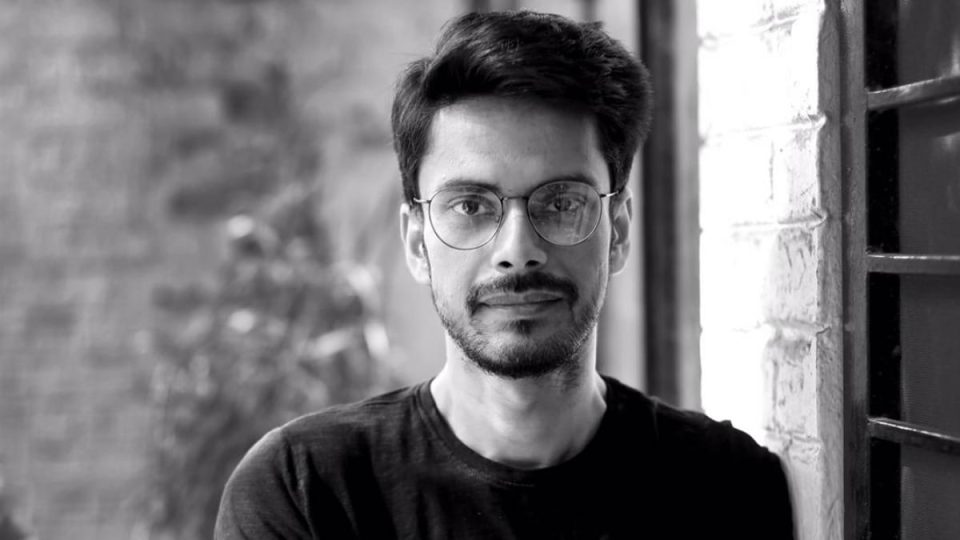
Taking a cue from the scene, the film itself is entitled All That Breathes. Yet so much remains unsaid about a place where currently people are not being allowed to breathe freely, the negation of this truth by the film silently stares back at us, much like the mute and injured birds seen recovering in the basement.
The other instance is when Salik and Saud make a tableau of dead kites on their terrace; they are heartbroken and decide that they will go bury the birds together. Instead of the burial scene, there is an abrupt cut to a loud raging fire; the camera focuses on a snail with an iridescent shell on its back, walking excruciatingly slowly across a screen lit up by cinders and fire.
Also read: KGF, Kantara effect: Kannada cinema plots unexplored territories
This unusual contrast of human-animal time induces a temporal vertigo, making us uncannily aware of the strange co-existence of temporalities. The slow cinematic durée of an animal-time evoked by the abrading snail is seen as a universal commentary on global climate change but it also drags along with it the spectre of human displacement and communal violence endured during the Partition of India. These remnants are undoubtedly buried in the topology of Delhi more than any other place.
A new visual grammar
After screening, Sen recounted that when he entered the dingy and derelict basement that doubled up as a workspace for treating injured birds and their soapbox business, he was struck by the discovery of this cramped space and the cinematic and poetic potential it held for him. Sen underlines that after years of filming the “kite-brothers” with a changing crew of cinematographers (due to the pandemic), a new visual grammar organically lent itself to the work, often by juxtaposing and contrasting the tight confines of a claustrophobic basement hospital and the wide and open vistas of the Delhi skies. Quintessentially, the rhythmic alternation of compression and expansion is also an analogy for breathing.
Linking the premise of cinema to breathing in this manner is absolutely fascinating, and Sen is highly admirable for this capacity to be a detached observer, someone who can step outside his own experiences and immediate environment to observe the conceptual and philosophical underpinning of his filmmaking process. This highly attuned sensibility to the documentary format and his astute observations on urban cityscapes is previously also evident in his film Cities of Sleep (2015).
However, in watching the film, there were points when I found myself declining what was on offer, namely a spectatorial contract with the auteur of the documentary, where we put our reservations about the missing contextual specificities aside and don the Gianfranco Rosi in the Boatman (1993) from Benares or Louis Malle in Calcutta (1969) glasses to observe the polluted skies, derelict basements and dying birds in the developing countries of the Third World.
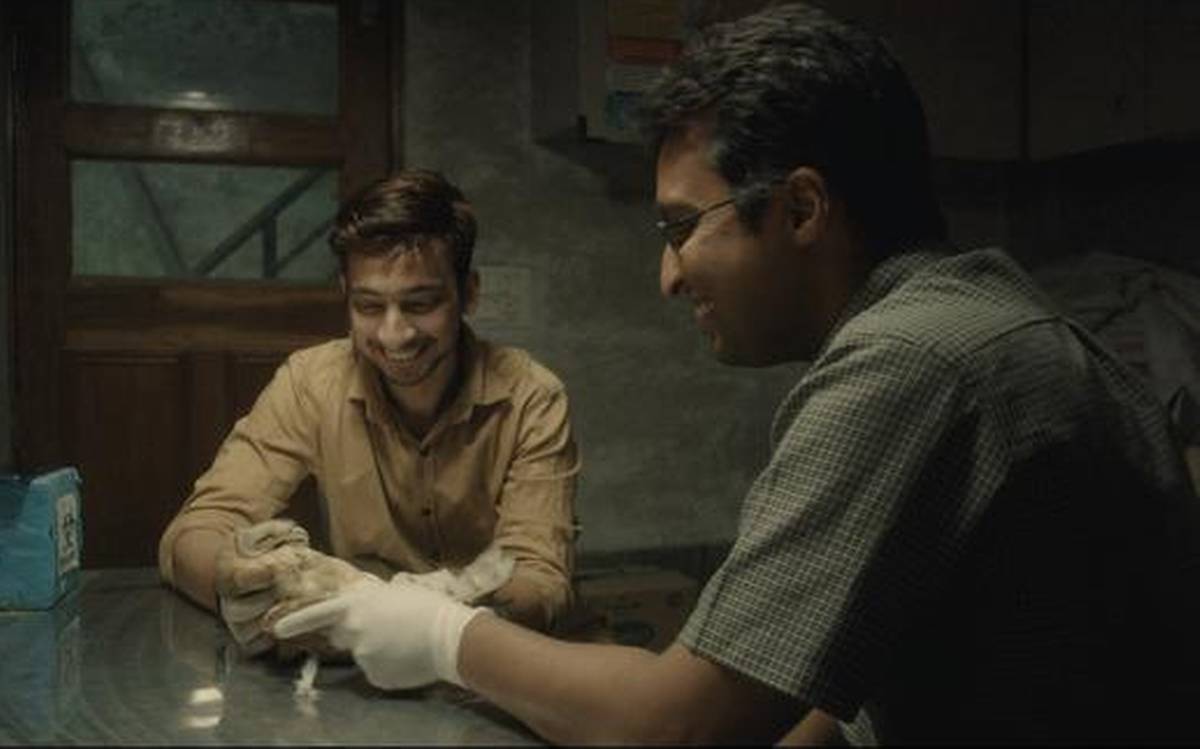
Having spent many of my formative years studying in Delhi, I did not find myself enchanted or in disbelief about landfills, air pollution or the labour conditions. Instead what I felt was a sense of unease that roughly had the contours of an ennui combined with cultural mistranslations of the lives of the documented subjects that presented as a neutral and safe commodity for a global audience, and in this regard it flourishes.
For example, in a voiceover, one of the brothers explains that since the black kites are carnivorous birds, they are often refused treatment in other bird hospitals in the country. However, no effort is made to contextualise this information for a global audience that neither grasps the subtext or social consequences that accompanies this enunciation.
The film boasts of an excellent community of cinematographers, editors and sound artistes. It was shot by Benjamin Bernhard, Riju Das, and Saumyananda Sahi, edited by Charlotte Munch Bengtsen, also the editor of Joshua Oppenheimer’s The Act of Killing (2012) with a terse music score composed by Roger Goula.
The documentary based on the lives of two Muslim brothers in Delhi owes to Sen’s work ethos and the dynamic generated by the small crew, amassing footage over a lengthy duration of time and blending it expertly with techniques borrowed from fiction filmmaking. At present, the global television rights for broadcasting All That Breathes has been acquired by HBO Documentary Films while Submarine Deluxe and Sideshow are organising screenings across smaller arthouse venues and in theatres worldwide. With all this, the film is going to find new audiences in the days to come.


